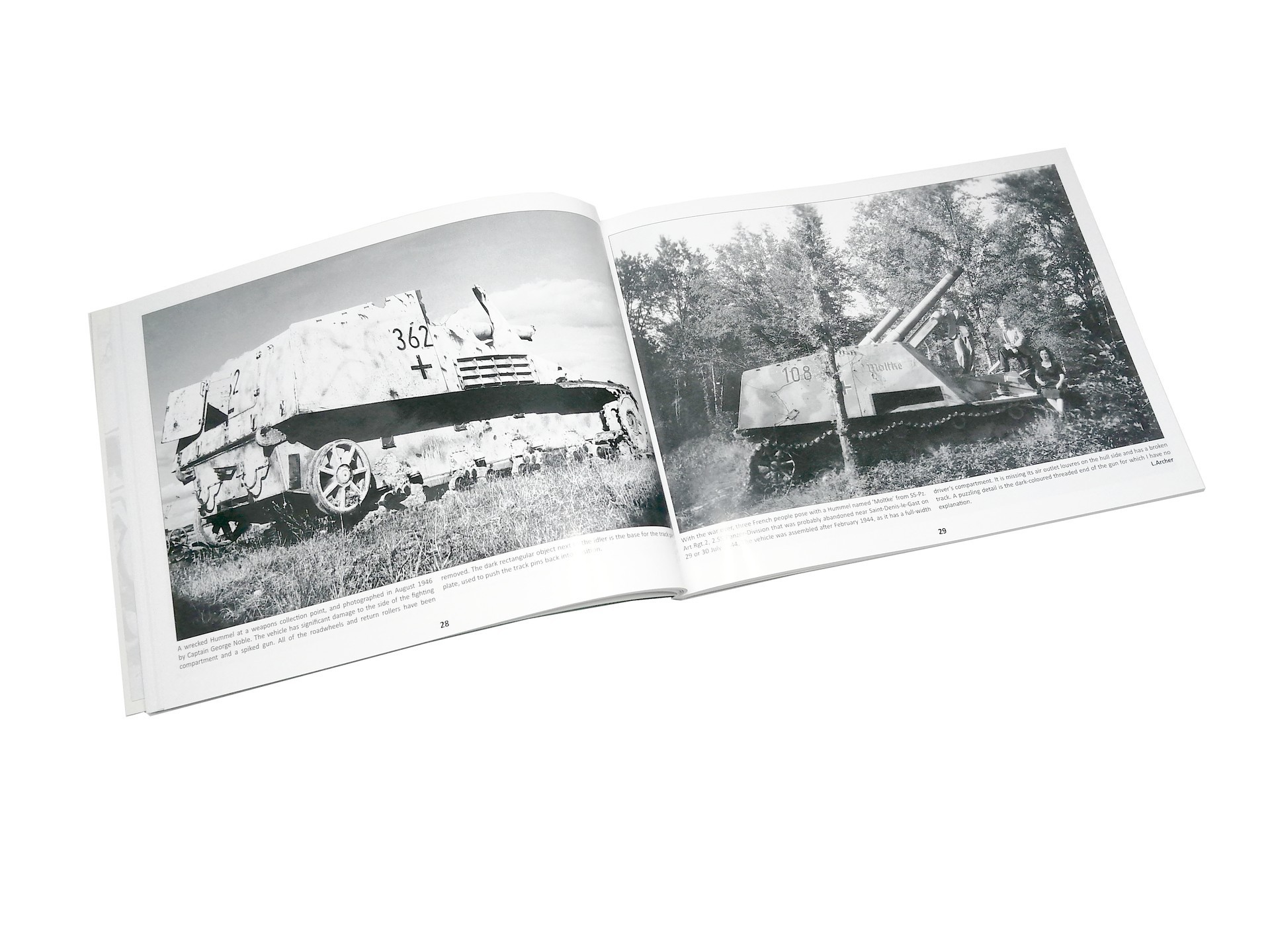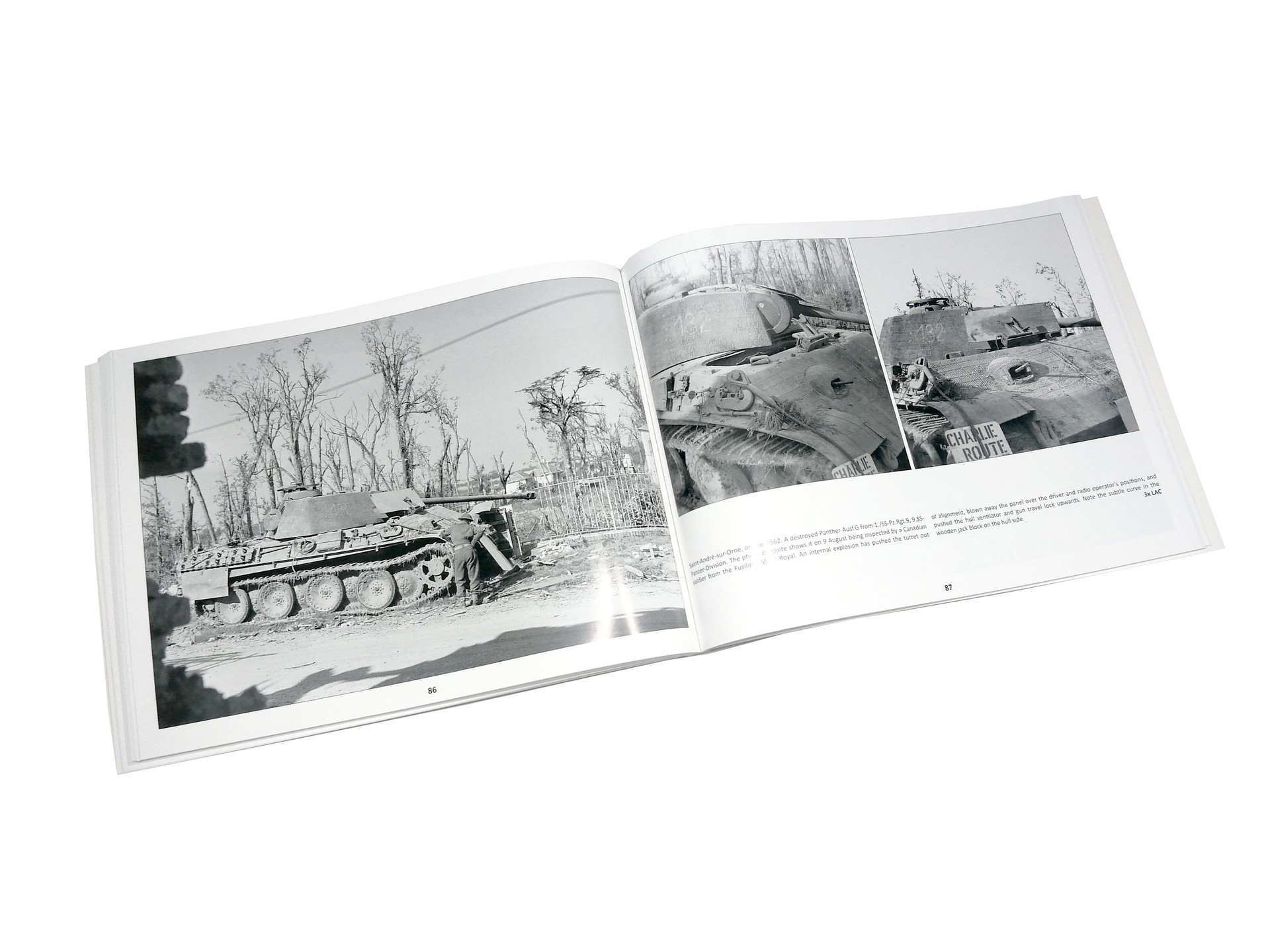
Lee Archer's Panzerwrecks series reaches its 25th volume with a return to one of our favourite locations: Normandy. 128 pages in A4 landscape format which allows the images to be printed at a large size, in fact most are full page.
As is usual with Panzerwrecks books, maximum use is made of space for the photos: there is not much text apart from a brief introduction on the inside front cover, although all the photos have detailed and explanatory captions. These captions include as much information as possible about the vehicle, unit, location, source of damage and more.
Even the inside back cover counts as a contents page, with a photo like any other page in the book. The index, which is arranged by vehicle, location and units, comes on a separate sheet.
The quality of the photos is mostly excellent, not only because of the original sharpness but also because they have been carefully processed to improve them. The few that are of lesser quality have been included for their special interest.
Also of note is the inclusion of QR codes when the location of the photo is known. By capturing it with a mobile phone, it takes us to the location as it looks today thanks to Google Maps.

Another feature of the Panzerwrecks series is to offer several views of the same scene. An example of this is the section that opens the book, with various photos of a British report on the damage caused by aviation rockets in tanks.

In addition to the photos, several illustrations by Felipe Rodna are included, recreating in colour some of the photos side by side. His skill gives a new dimension to the images as he not only adds colour but also reflects the wear and tear or damage to the vehicle as can be seen in the photograph.

Another of the attractions of the series, and this volume is no exception, is the rarities included. In addition to usual vehicles such as the Tiger, Panther or StuG, in this edition we find interesting series of photos of the flamethrower version of the Sd. Kfz 251 (251/16) or the Selbstfahrlafette für 7.5cm Pak 40 auf Somua MCG among others.
But even in other more common vehicles you can identify unusual details that sometimes could go unnoticed but that the captions conveniently point out.
In any case the variety of vehicles is remarkable, including also Panzer IV, StuG IV, Hummel, several variants of the Sd.Kfz. 251, RSO and more.

As always, although the book focuses on wrecked vehicles, these are found in varying degrees, ranging from some that have turned into a jumble of metal to others that have simply been abandoned and look in perfect condition.

Conclusion
After 24 editions of Panzerwrecks this new volume does not disappoint expectations and offers an excellent set of large-format photos of destroyed German vehicles, with accurate captions and detailed images of exceptional quality. Felipe Rodna's illustrations complement it perfectly, and the index of vehicles, locations and units is very useful when we want to look for something specific. Thanks to the clarity and size of the photos, it is a book in which you can spend a long time looking for all the details it offers.




























